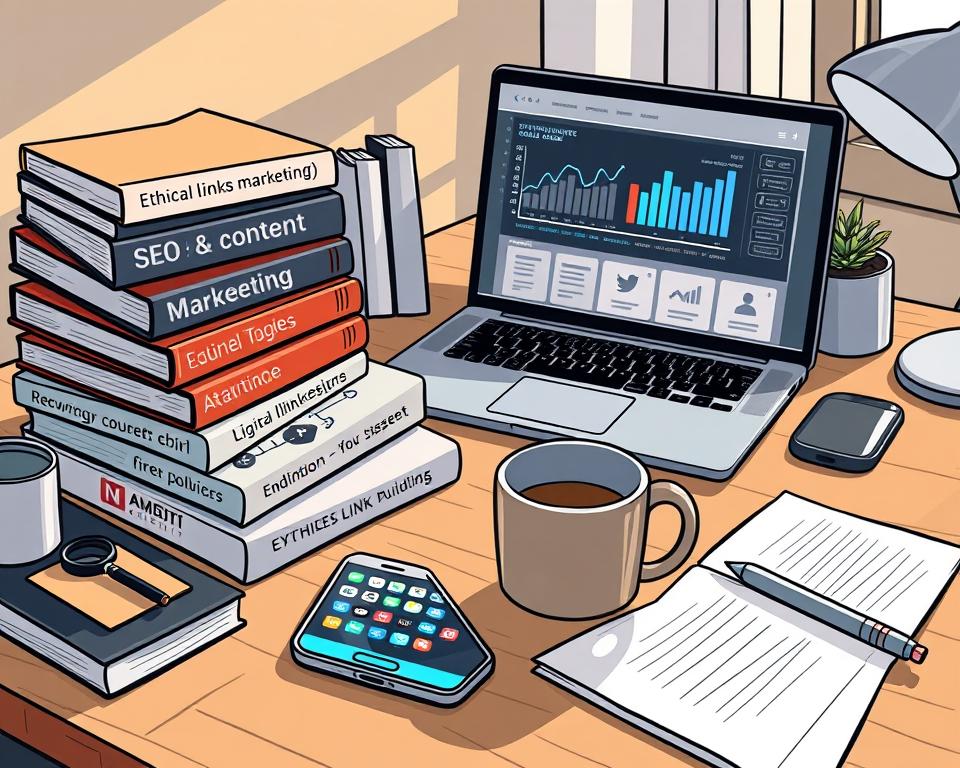Ultimate Home Decor Boutique in HK: Superior Home Essentials
“The details are not the details. They make the design.” – Charles Eames. This saying embodies the core of turning a residence into a home. It emphasizes the vital role of quality in furniture selection. Stockroom Furniture is a standout in Hong Kong, known for its top-notch home essentials. It offers a vast selection of stylish and practical furnishings, catering to different tastes in interior design. Each piece not only elevates the aesthetic appeal but also serves a practical purpose.
Finding the right Stockroom in a bustling city like Hong Kong can be challenging. Yet, grasping the value of quality furniture in Hong Kong can significantly enhance your living space. Stockroom Furniture provides a vast selection that blends style with functionality. This guarantees that customers can select pieces that will stand the test of time. Join us as we explore the reasons why this furniture shop is a must-visit for home essentials.
Why Finding the Right Furniture Shop in Hong Kong Matters
As Hong Kong changes, so does the way to home furnishing. Lifestyle and space utility have seen significant shifts. Homes now serve multiple purposes, mirroring a transition in classic expectations. A furniture shop in Hong Kong that meets these new needs can redefine how residents arrange their environments.
The Evolution of Hong Kong Homes
Modern Hong Kong homes are adapting to new demands. They now support work-from-home, hosting visitors, and personal style. This evolution demands furniture shops that offer flexible options, marrying form and function. Homeowners look for furniture that is both beautiful and practical, creating unique living spaces.

Balancing Quality and Affordability
In today’s market, quality and affordability are key for consumers. Finding a furniture shop in Hong Kong that hits these criteria is tough. Homeowners look for durable pieces that reflect their personality without breaking the bank. By making informed choices, they can achieve a beautifully furnished home without sacrificing quality.
Space Constraints and Smart Solutions
Limited space in many Hong Kong apartments highlight the need for smart furniture solutions. Pieces that maximize functionality can transform small areas into functional living spaces. Homeowners invest in modular furniture and storage solutions that are attractive yet compact. These options enable for practical living while maintaining quality and affordability.
Why Stockroom Furniture Is Your Go-To for Quality Furnishings
Stockroom Furniture is a top pick for those looking for quality home furnishings in Hong Kong. This furniture outlet boasts a vast collection of products, merging classic and contemporary styles seamlessly. From elegant dining sets to comfortable sofas, it caters to diverse tastes and needs.
Stockroom Hong Kong is renowned for its craftsmanship focus. It prioritizes sustainability in material sourcing, ensuring each piece reflects environmental commitment. This eco-friendly approach makes selecting furniture a rewarding experience, as it enhances living spaces responsibly.
Whether you’re refresh a room or searching for a statement piece, Stockroom Furniture has you covered. Its offerings are both eye-catching and functional. Each item embodies quality, durability, and style, making it a top choice for home furnishings in Hong Kong.
A Guide to Top Furniture Shops in Hong Kong
Hong Kong is a dynamic hub for furniture shopping, with a spotlight on the best furniture shop in Hong Kong. Stockroom Hong Kong stands out with its custom-crafted furniture, tailored to personal tastes. This diversity showcases the unique offerings of each retailer in this bustling city.
Custom-Crafted Excellence at Stockroom Hong Kong
Stockroom Hong Kong is celebrated for its high-quality, custom-crafted furniture. It enables individuals to personalize their living spaces, guaranteeing a unique touch. This focus on craftsmanship makes Stockroom a leader among top furniture retailers in HK, attracting those who value quality and design innovation.
Comparing Top Furniture Retailers HK
Stockroom is a top choice, but many other retailers in HK provide competitive options. A comprehensive comparison shows the importance of product quality, customer service, and accessibility. IKEA and Muji are recognized for their affordability and modern designs. On the other hand, premium stores feature exclusive, designer collections. Pricing, delivery options, and showroom experiences are key factors in choosing a furniture outlet in Hong Kong.
What Makes a Furniture Outlet in Hong Kong Stand Out
Furniture outlets like Stockroom distinguish themselves by offering unique products at varied price points. They offer discounts on quality items, making home transformation affordable and stylish. The knowledge of the staff enhances the shopping experience, offering valuable insights and design tips.
| Feature | Stockroom Hong Kong | IKEA | Muji |
|---|---|---|---|
| Customization Options | High | Limited | Medium |
| Price Range | Premium | Affordable | Mid-Range |
| Customer Service | Personalized | Standard | Highly Responsive |
| Product Variety | Unique Designs | Mass-Produced | Simplistic Aesthetic |
Designer and Luxury Furniture Shops HK
Exploring designer and luxury Furniture Hong Kong reveals a thriving sector catering to diverse tastes and styles. Miranda.M and Zara Home shine for their unique offerings. Each contributes to the rich landscape of designer furniture Hong Kong. From mid-century modern to trendy pieces define their approaches, ensuring there’s something for everyone.
Why Miranda.M Is a Mid-Century Modern Must-See
Miranda.M shines as a hub of mid-century modern design, attracting consumers seeking timeless pieces with a contemporary twist. The store features an elegant selection of furnishings that blend functionality with elegant aesthetics. Customers can discover beautifully crafted sofas, coffee tables, and accent chairs that reflect the iconic style of the 1950s and 1960s.
Each piece is thoughtfully designed to create a living space that resonates with sophistication. This makes the store a staple among luxury furniture shops HK.
Why Zara Home Appeals to Trendseekers
Zara Home caters to those who seek trendy collections at reasonable prices. With a track record of style and affordability, this store offers an array of home decor items and furniture that appeal to a wide audience. From stylish dining sets to fashionable bedding, each collection mirrors current design trends while upholding high standards of quality.
Whether furnishing a new apartment or refreshing an existing home, Zara Home provides fashionable solutions that don’t compromise on modern aesthetics.
Affordable Furniture Stores Hong Kong for Every Budget
Hunting for affordable furniture stores in Hong Kong can be intimidating. Many look for stylish pieces without spending a fortune. Fortunately, there are stores for every budget, guaranteeing quality and style aren’t sacrificed.
Numerous furniture stores in Hong Kong serve the savvy shopper. They provide everything from modern designs to timeless classics. Look for brands that balance durability with affordability. Local outlets are great for finding creative, budget-friendly pieces.
Explore different sections like living spaces, bedrooms, and dining areas. Each store has distinct offerings to make your home both practical and stylish. Keep an eye out seasonal sales and promotions to save even more.
With the right approach and an eye for deals, decorating your space can be done on a budget. Balance both function and style to create welcoming spaces that reflect your personal taste.
Specialized Furniture Categories in Hong Kong
Hong Kong boasts a wide array of specialized furniture, meeting diverse needs and tastes. From luxurious leather sofas to cutting-edge home office solutions, there’s something for everyone. Bespoke artisans in Hong Kong are key, creating bespoke pieces that enhance both function and beauty.
Why HK Leather Sofas Are a Cut Above
The leather sofa collections in Hong Kong are a blend of comfort and sophistication. Made from premium materials, these sofas promise longevity and add a touch of style to any living room. With designs ranging from traditional to contemporary, they showcase the skill of local craftsmen, appealing to those with refined taste.
Custom Furniture Makers Hong Kong
Custom furniture makers in Hong Kong combine creativity with personalization. They tailor pieces to fit personal dimensions and styles, enhancing home décor and optimizing space. This approach is perfect for those living in apartments or smaller homes, providing a practical solution.
Designing the Ideal Home Office
The rise of remote work has increased the need for effective home office solutions. Ergonomic leather sofa HK and adjustable desks are essential for enhancing productivity and comfort. These investments convert any space into a productive workspace, catering to the growing number of home-based professionals.
The HK Showroom vs. Online Shopping Dilemma
The furniture shopping scene in Hong Kong is a mix of hands-on showrooms and the ease of online browsing. Shoppers looking for top-notch pieces often visit Stockroom Furniture. Here, the personal touch makes the buying journey special. The opportunity to feel and experience furniture creates a bond that online shopping can’t match.
Physical Showroom Benefits at Stockroom Furniture
Exploring furniture showrooms in HK has many perks. At Stockroom Furniture, customers can directly interact with the products. This makes it easier to judge comfort and quality. The staff, well-versed, are ready to help, making the shopping experience welcoming.
This hands-on experience aids in making better choices and can reveal items you hadn’t considered before.
Online Shopping vs In-Store Experience
Online shopping has become very popular, thanks to its convenience. Websites let customers browse a broad range of furniture from home, avoiding crowded showrooms. Yet, this ease might mean missing out on the tactile experience.
While online reviews and descriptions are useful, they can’t replace the sensory experience of visually assessing and touching furniture in person. It’s important for shoppers to consider both options carefully.
Home Furnishing Stores HK for Complete Room Solutions
Home furnishing stores in HK offer an comprehensive array of options for crafting harmonious living environments. These establishments deliver a one-stop solution for all your room needs, from fundamental furniture to decorative accessories. This integrated approach guarantees that every item works in harmony, resulting in a unified interior design.
At places like Stockroom Furniture, customers receive invaluable guidance on designing both beautiful and practical spaces. The knowledgeable staff assists in selecting items that align with personal style and fulfill functional requirements.
These stores cater to varied tastes and preferences. Whether you’re drawn to modern aesthetics, classic elegance, or something more unique, you’ll find it here. The convenience of finding everything you need in one place makes the shopping experience more enjoyable. It allows you to visualize and create a personalized sanctuary within your home.
Smart Shopping Tips for Furniture Hong Kong
Shopping for furniture in Hong Kong can be a delightful journey with the right knowledge. Smart shopping strategies can guide you through the busy market, ensuring you get the most value. Collaborating with experienced home stylists, timing your buys, and considering delivery details can greatly enhance your shopping experience.
Working with Home Stylists like The Editors Company
Partnering with home stylists, such as The Editors Company, brings tailored insights to your shopping. They navigate the vast furniture options in Hong Kong, crafting a unified aesthetic. Their expertise in design and functionality streamlines the process and simplifies decision-making.
When to Buy Furniture for Maximum Savings
Smart shopping involves watching for seasonal sales and promotions. Furniture stores frequently offer discounts during holidays or end-of-season sales. Being alert of these periods can lead to significant savings, enabling you to acquire premium items at reduced prices.
What to Know About Delivery and Assembly
Delivery aspects are crucial when buying furniture. Understanding delivery costs, schedules, and assembly options streamlines the process. Some retailers provide free assembly, while others may charge extra. Being aware these details ensures a smooth journey from purchase to delivery.
To Conclude
Choosing the best furniture shop in HK is key to creating a home that mirrors your style, offers comfort, and is functional. Stockroom Furniture excels with its quality and dedication to customer happiness. Their extensive range of customizable options and immersive showroom experience make them a leader in Hong Kong’s furniture scene.
A well-furnished home is more vital than ever, given the evolving furniture market. Each item plays a significant role in the ambience and usefulness of your living areas. As you begin your furniture search, explore the many options available—they can greatly improve your lifestyle and reflect your personality.
Furnishing your home can be both fun and rewarding with the right choices. By navigating the furniture market, you can create spaces that meet your needs and tell your story. So, embark on your furniture shopping in Hong Kong and discover the pieces that align with your vision of home.
FAQ
What does Stockroom Furniture HK offer?
Stockroom Furniture boasts a vast range of chic and practical furniture. You’ll find both classic and modern designs, suitable for any interior style.
How does Stockroom Furniture ensure quality in its products?
Stockroom Furniture prioritizes craftsmanship and eco-friendly material sourcing. This commitment makes it a top choice for those who value both quality and environmental responsibility.
Are there custom furniture options available at Stockroom Hong Kong?
Yes, Stockroom offers bespoke furniture tailored to your preferences. This personalization enhances your home’s design, ensuring it meets your exact requirements.
What distinguishes Stockroom from other furniture outlets in Hong Kong?
Stockroom excels due to its focus on quality, exceptional customer service, and a curated selection of unique items. It caters to all budgets and styles.
Can I find affordable furniture options at Stockroom?
Stockroom Furniture offers a variety of products that blend quality with affordability. This guarantees you can find stylish pieces without compromising craftsmanship.
Which niche furniture segments are prominent in HK?
Hong Kong offers a range of specialized furniture, including premium leather sofas and custom-made pieces. There are also home office solutions for remote work.
How does shopping in a physical showroom compare to online shopping?
Shopping in physical showrooms like Stockroom allows you to feel the quality and texture of furniture firsthand. Online shopping, on the other hand, offers convenience and flexibility.
Which home furnishing stores in Hong Kong offer complete room solutions?
Many home furnishing stores in Hong Kong provide complete room solutions. They offer furniture and decor accessories, ensuring a cohesive interior design.
How can I shop smart for furniture in HK?
To shop smart in Hong Kong, consider working with home stylists, time your purchases seasonal sales, and factor in delivery and assembly for a seamless experience.
What are some of the best furniture shops in HK for luxury options?
For luxury furniture, Hong Kong’s designer and high-end shops, such as Miranda.M and Zara Home, are top choices. They provide stylish collections for those seeking premium statement pieces.








